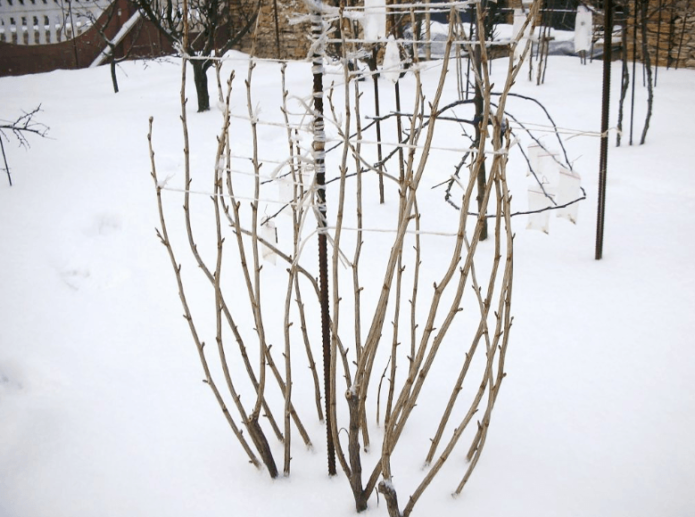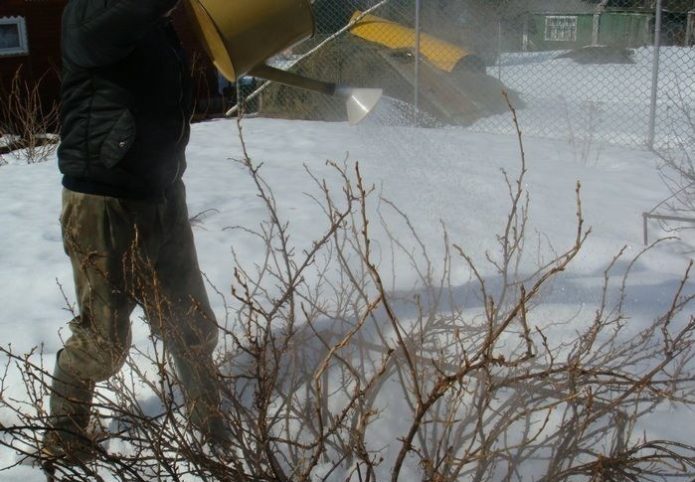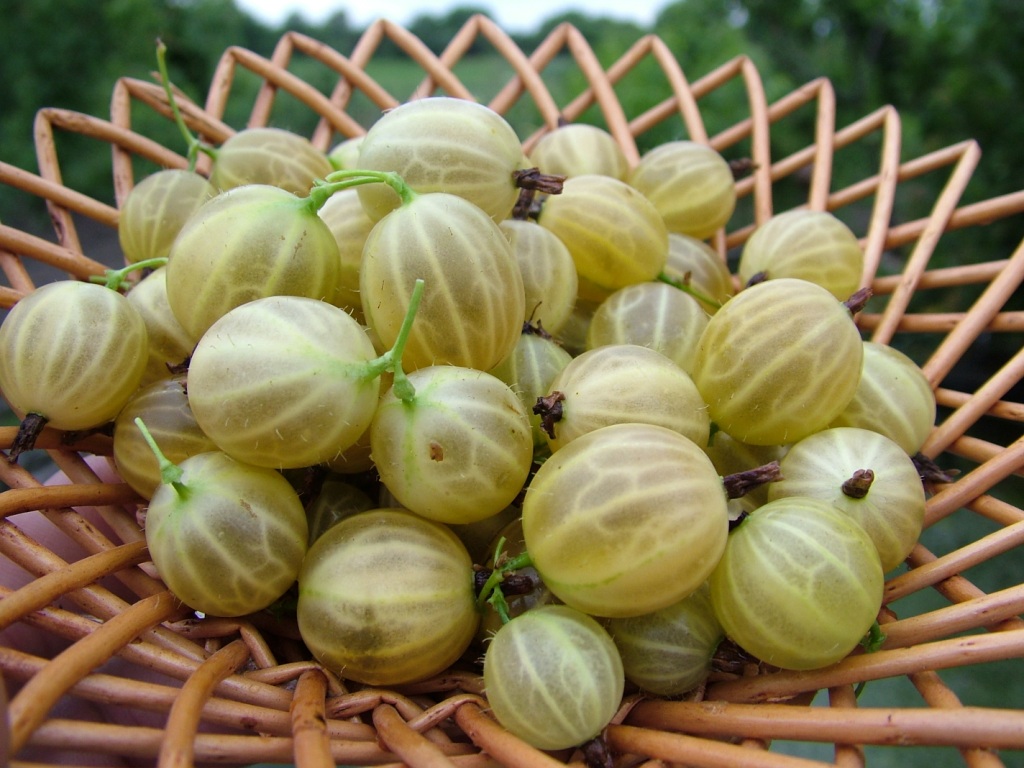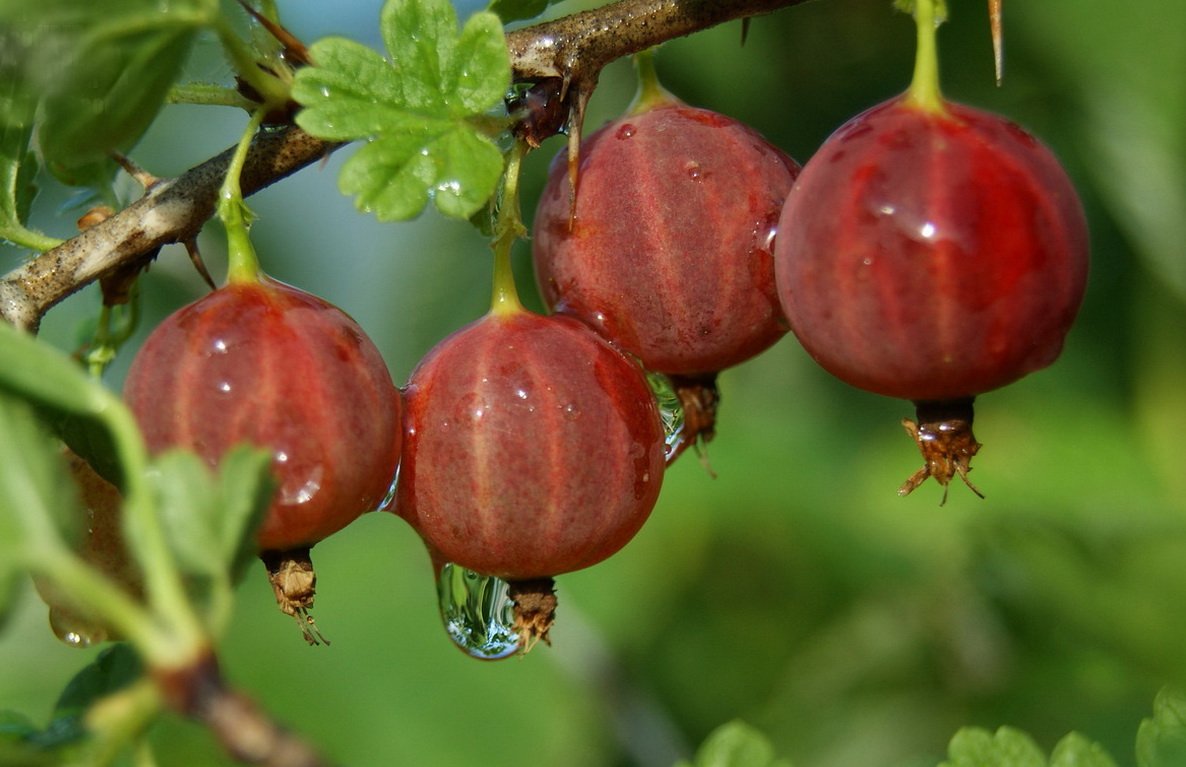Gooseberry bushes were treated with boiling water by our grandmothers. And if this method has survived and is still practiced, moreover, by modern and advanced gardeners, then it is effective. It is important to know what the heat treatment helps from, how to carry it out correctly, so as not to harm either the bushes or yourself.
Content
The value of boiling gooseberry boiling water
Heat treatment of gooseberries is a worthy and environmentally friendly replacement for early spring spraying with pesticides. Without any chemistry, you will destroy pathogens of fungal diseases and larvae of pests wintering on the surface of the branches. Boiling water can be called a natural preparation of contact action: it works by directly hitting parasites, it is effective in the fight against powdery mildew, ticks and aphids. By processing gooseberries in spring, you destroy foci of infection, from which thousands of pests can emerge with the onset of heat. They will start drawing juices from the plant, will multiply and may leave you without a crop.
Boiling water treatment is not a panacea. The procedure really destroys the nests of parasites that hibernate on the shoots, however, pests and fungi can wait out the winter in the soil and on weeds. In addition, in the warm season, they fly over on their own or are carried by the wind from neighboring plots, animals, and can remain on garden tools with which other plants were treated. Therefore, watering gooseberries with boiling water does not completely free you from further prevention and control of diseases and pests.
Video: the effect of scalding gooseberries
When to process
Boiling water leaves burns on all living things, it is dangerous for green leaves, it is capable of destroying the kidneys if they are already swollen. Heat treatment is well tolerated only by dormant bushes, when all the surfaces of the branches are still covered with bark, lignified the previous fall.
Gooseberries wake up early. One has only to thaw the top layer of the earth, as the buds immediately begin to grow, green cones appear on their tops. During this period, it is no longer possible to pour boiling water, you need to be in time earlier - before the snow completely melts. Get to the site in the snow, on the very first days, when the temperature starts to rise above 0 ° C during the day.
Some gardeners are so afraid of missing the deadline that they come to the dacha even before the snow begins to melt and, in order to scald the bushes, shovel the snow off them.
Processing rules and technology
One bush consumes about 3 liters of boiling water. Multiply this volume by the number of bushes, you can at the same time count the currants and honeysuckle (these crops are also well treated by heat treatment). After figuring out how much water you need, decide how you will heat it. There are many more options in the country than in the apartment:
- you can flood the bath and take water from there;
- heat up on a wood stove;
- use a gas burner, a stove stove, a boiler as a heat source;
- light a fire in the grill or just on the site.
Video: how to make a hearth from a barrel and heat water on it
Be sure to use a watering can and a ladle for scooping water from a container with boiling water. Plastic softens, deforms from high temperatures, handles can bend, stretch, fold in half, and you will get scalded.
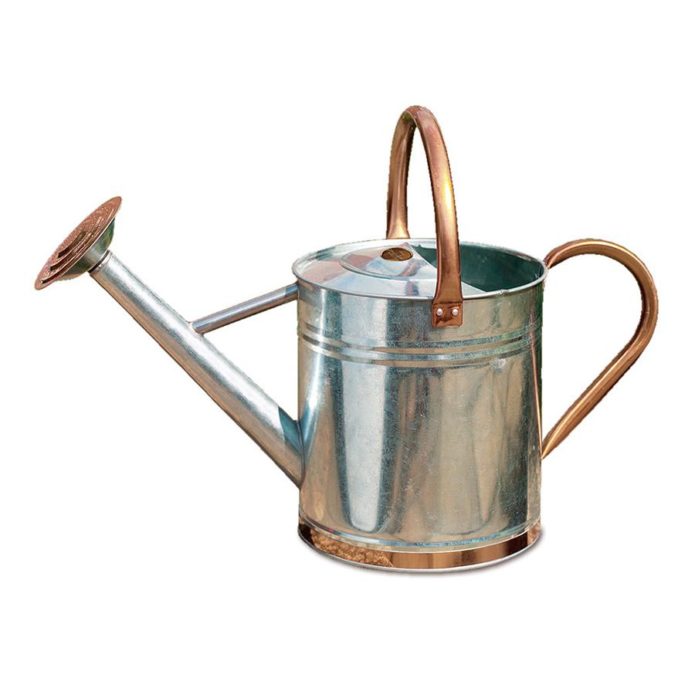
A watering can with a capacity of no more than 8-9 liters is well suited for treating bushes - and it's not hard to carry with a bush, and the water will not have time to cool
Stages of processing bushes with boiling water:
- While the water is heating, stomp the paths to the bushes and sprinkle them with sawdust, ash, sand. During the period of snow melting, it is always slippery under your feet, walking with boiling water in your hands, you can slip, get injured and burned.
- If leaves remain on the branches, tear them off and throw them into the fire. You need to scald each twig from all sides, and the leaves will get in the way, covering the shoots and buds.
- Pull the branches of each bush together so that they are denser, but not touching each other. The consumption of boiling water will decrease, and the effectiveness of the procedure will increase, because inclined and horizontal branches cannot be scalded from the bottom side, and there is no such inconvenience with vertically directed branches.
- The surface under the bushes, if there is little snow on it, can be covered with cardboard - in case you suddenly spill boiling water under the bush and burn the roots. This should not happen when the procedure is performed at the right time. However, for beginners, for their own peace of mind and safety net, it is better to use this recommendation.
- Pour boiling water from a container into a watering can. The water temperature will then drop to about 80 ° C. Go water right away. Water cooled to 60 ° C no longer has a therapeutic effect.
- Near a bush, raise a watering can in front of you with outstretched arms and water, running it in a circle or from side to side. Try to moisten each branch, do not hold in one place for more than 5 seconds.
- Act quickly but calmly. Scalded one bush, move on to another. Remember that the water should not cool down, and the less there is in the watering can, the colder it is. If the twigs get wet in front of your eyes and immediately dry up, there is thick steam, then you are doing everything right. Ideally, the water should not run off in streams and collect in puddles at the foot of the bushes. Only a few drops can reach the ground.
Do you need additives in boiling water
Boiling water itself is a self-sufficient remedy. If you add copper, ferrous sulfate or boric acid, and even in concentrations, as for spraying with cold water, then you will surely burn the bark and kidneys. After all, the surfaces of the shoots scalded with boiling water soften and become vulnerable, especially in the places of forks and kidney junctions, where drops can linger. Water acts for a short time and quickly evaporates, but the chemistry dissolved in it will remain.
You can add the already familiar potassium permanganate (slightly pink solution). There is no point in dripping iodine into hot water, as some advise. Iodine will evaporate under the influence of high temperatures, you will not even have time to reach the bush. There will be no benefit, and no harm either. There are gardeners who dissolve the remnants of their tablets in boiling water, especially aspirin and trichopolum are often mentioned. Consumption per bucket, according to various recommendations, is 1-10 tablets.
You can add an antibiotic (dissolve the tablet in a bucket). At home, there are always leftovers of medicines (and expired ones, incl.), For several years I watered with trichopolum - almost no infection until autumn.
If you decide to add a drug to boiling water, then dissolve it first in a small amount of hot water (for example, in 1 liter), then quickly pour the liquid into the watering can and loosen it up. When dissolved immediately in a watering can, the water will cool down from thorough mixing, there will be no sense in your efforts. Don't forget: the main thing in boiling gooseberries is the high temperature.
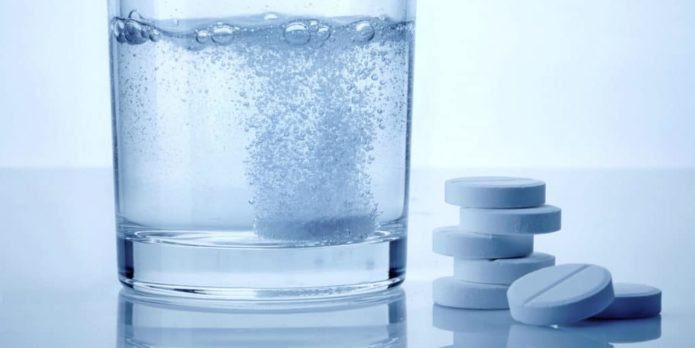
If you need to add a preparation to boiling water, dilute it first with a little hot water (for example, 1 liter) for better dissolution
Many chemicals, when dissolved in hot water, can give off strong odors that are dangerous to inhale. In addition, such a solution, once it gets on your skin, can cause not only thermal, but also chemical burns.
Boiling water in early spring can simultaneously replace three chemical preparations: fungicide (against fungal diseases), acaricide (against ticks) and insecticide (against insect pests). But heat treatment is effective only in the fight against parasites wintering on the shoots. It should be carried out before the kidneys swell, while observing safety precautions.
